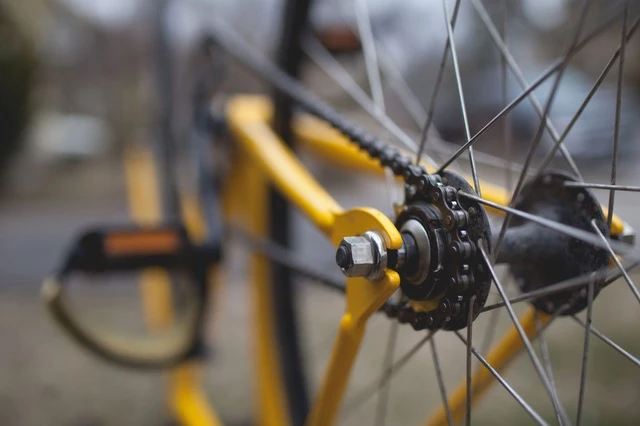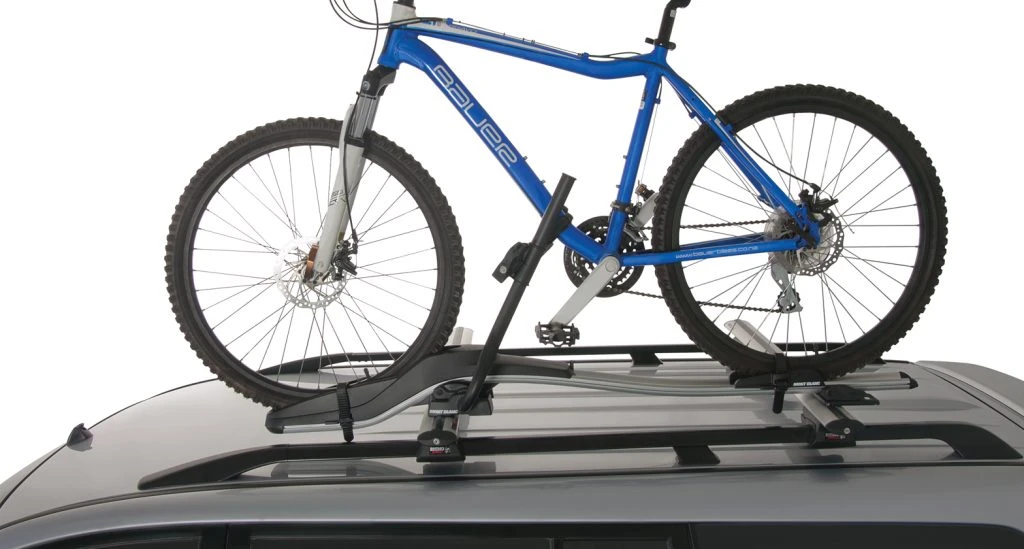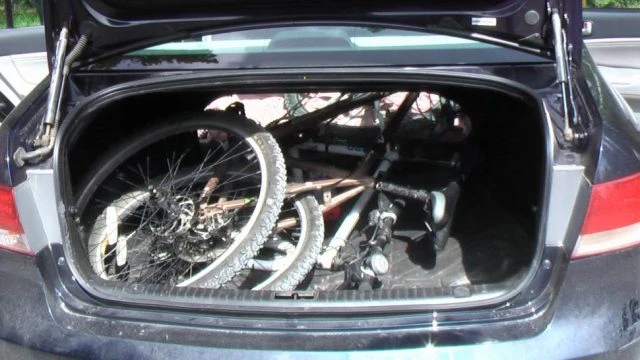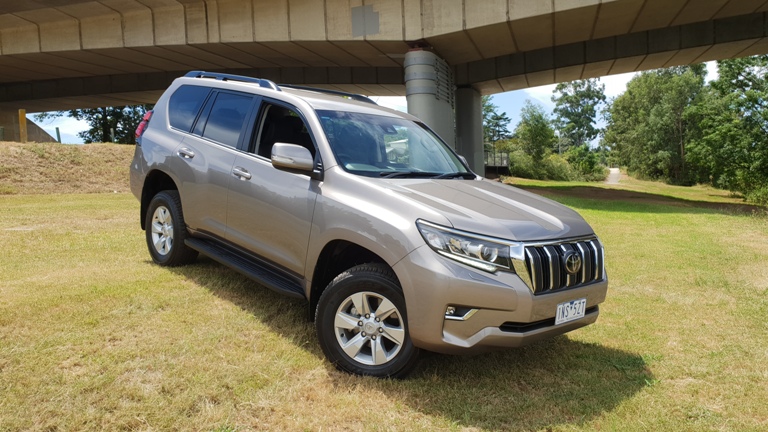Archive for June, 2020
How do you Transport a Bike?
For some time now, cycling on our roads has been on the rise. Whether it’s the casual enthusiast, devout fitness fanatic, or professional rider, everywhere you look there appears to be a bike on our roads. And while some cyclists have adopted bikes as a way to break free from being behind the wheel, the two forms of transport are not always mutually exclusive. In fact, often riders like to transport their bicycles with them on long drives.
So what’s the best way to transport your bike by car?
Use a bike rack
If opting to carry your bicycle on a rear mounted rack, it’s important that the rack chosen is compatible with your vehicle. Generally one would be able to choose from straps (more suited to hatchbacks and sedans), or a tow ball mounted option (SUVs/4WDs). In the case of the latter, confirm that the load being carried is permitted by the vehicle manufacturer, and that you have access to open the boot if necessary.

Perhaps the most common option that is sighted on our roads, roof racks are often used by motorists who drive station wagons or SUVs/4WDs. The rack types available vary in their transport configuration, where bicycles may be stored upright or upside down. Irrespective, the rack needs to conform to the vehicle you are driving, and should be installed in accordance with the manufacturer’s specifications. Always keep in mind that your vehicle may be restricted from safely accessing certain spaces when transporting a bike on your car’s roof.

Inside the cabin or boot
In the case of vehicles with larger internal spaces, some motorists may elect to disassemble the bike’s wheels and secure their bicycle inside the boot or rear cabin. While you might think that storing a bike inside your vehicle eliminates the risk of it causing a problem, this is far from the case. Should you need to manoeuvre suddenly, or if you find yourself in an accident, unsecure bikes have the potential to act as a projectile and cause notable damage. As such, you should ensure the vehicle is tied down with straps.
Fortunately, some hatchbacks and SUVs allow you to fold the seats down so that you can lay your bike across an expanded cargo area. This is a convenient solution that saves you time, while also making it easier to secure the bike.
If you’re driving a ute, you might just have an even simpler solution at hand! That’s right, the rear tray can serve as a very functional and capable space to take your bike with you, just about anywhere.

Other considerations
Just to round things out, it’s worth noting some of the particulars as far as the law is concerned. In some states like Victoria, it’s actually illegal to have a bike rack installed on your vehicle if there are no bicycles fitted.
In what is perhaps less of a surprise, it’s important to ensure your number plates are not blocked by a rear bike rack, or you’ll also be facing the prospect of dealing with an infringement notice.
Whether you are storing your bike inside your car, or transporting it via a dedicated bike rack, you may also want to consider the risk of theft. As some bikes can be worth thousands of dollars, it is not uncommon for them to be the target of crime.
Last but not least, don’t skimp on the quality of any fittings or supports you buy. While you might think all parts do the same job, the reality is some may be better quality than others. Before you head off onto the road, it doesn’t hurt to double or even triple check that your bike is secured firmly and locked in place.
Great EVs Available in Australia
Ever wanted to bite the bullet and go over to electric? Driving electric is getting a little more popular, particularly as EV technology has moved on since the electric postie mobile, electric milk float or electric ice cream van. EVs are appealing in that they offer zero emissions (once built) and offer much lower running costs. The other thing about EVs is that they are rather fast; delivering a strong surge of power that is immediate – and the acceleration is unlike anything seen in the present and past world of combustion engines.
Here are some EVs you can buy in Australia:

Audi e-Tron
Audi e-Tron (approx $120k at least)
The e-tron is a high-end EV with Audi’s enviable build quality and interior finish being part of the e-tron lifestyle. This is a nice German EV which uses a dual-motor setup with a choice of two battery sizes and power outputs: the e-tron 50 with a 71 kWh battery and 225 kW, or the e-tron 55 with its 95 kWh battery and 300 kW output. The driving range is between 300 and 480 km, all of which are refined and relaxed.
If you are doing bigger mileage and longer stints behind the wheel, then the e-tron is a great place to spend time. Passenger and luggage space are excellent, and this is a fine EV from Audi.

BMW i3
BMW i3 (approx $70k)
The BMW i3 was BMW’s first electric car, and it brought a quality edge to the compact EV world. The car is efficient and even uses recycled materials inside the cabin. There’s lots of space in the front seats.
A new i3 is made from carbon-fibre, boasts a 42.2 kWh lithium-ion battery, and has a 300 km range. The more powerful i3 gets a 134 kW motor that can send this little car from 0 – 100 km/h in 6.9 seconds.

Hyundai Ioniq Electric
Hyundai Ioniq Electric (approx $50k)
The Hyundai Ioniq EV had a facelift last year which gave the car a new lease of life in the form of a 100 kW motor linked to a 38 kWh battery, which has upped the car’s official driving range to over 300 km.You also get a 50 kW fast-charger that will replenish a flat battery to 80% in less than an hour. At home on the standard 7 kW wallbox you can fully charge the Ioniq in just over six hours.
Hyundai Ioniq cars boast a decent boot size and excellent infotainment systems.

Hyundai Kona Electric
Hyundai Kona Electric (approx $60k)
Hyundai’s electric SUV is going to be a good choice for those wanting EV in SUV styling. This small electric SUV comes with a 64 kWh battery and has a range of over 400 km on a full charge. With its 150 kW motor the Hyundai Kona scampers from a standstill to 100 km/h in around 7.6 seconds, which is very smart – quicker than most small SUVs. It comes with an instant hit of power when you push the accelerator. The interior is roomy, the infotainment excellent, and there’s a 332-litre boot space. It’s got to be liked.

Jaguar i-Pace
Jaguar I-Pace (approx $123k)
This all-electric SUV is incredibly impressive. It combines a 90 kWh battery with an AWD electric motor that delivers close to 225 kW. Even though heavy, it’s still incredibly rapid, managing the 0-100 km/h sprint in just 4.5 seconds. A 350 km driving range is very achievable in the real world. The new I-Pace is luxurious, comfortable, roomy, and delivers on boot space, too.
On the road, the car deliver’s razor-sharp handling and rides smoothly. The Jaguar I-Pace is an award winner, too: It was crowned 2019 World Car of the Year at the New York Motor Show.

Kia e-Niro
Kia e-Niro (approx $60k)
A new Kia e-Niro has a great driving range, with as much as 450 km available on a full charge. This compact SUV is comfortable, practical and great value for money, making it one of the best all-round packages on the electric car market today. The car features a 64 kWh battery and a 150 kW electric motor. Boasting plenty of decent features, the e-Niro is a well-equipped small SUV with an 8-inch touchscreen, sat nav, heated leather seats, adaptive cruise control, a reversing camera and many other goodies besides. You also get the use of 451-litres of boot space and a 7-year/160,000 km warranty. The buy new price is very competitive, and it’s little wonder that it is one of the best on the market and liked by many.

Nissan Leaf
Nissan Leaf (approx $50k)
A new Nissan Leaf looks cool and is available in two forms: one version has a 40 kWh battery that gives an official range of 270 km, while the top-of-the-range new Leaf e+ features a larger 62 kWh battery returning up to 380 km travel range. Real world range will likely be less, but still this is very good for the most part and many will be very happy with it. You’ll be able to recharge that battery to 80% in 40 minutes from a rapid charger, and in 7.5 hours from a home wallbox.
A 0-100 km/h sprint takes 8 seconds. A roomy, stylish interior is a Nissan Leaf strong point. They drive very nicely and offer 435-litres of boot space. Safety is very strong, especially with features like the advanced semi-autonomous Pro Pilot driving technology available on higher spec models. The car’s infotainment system is good and it boasts Apple CarPlay and Android Auto.

Renault ZOE
Renault Zoe (approx $50k)
The Renault ZOE is one of the best electric cars on sale in Australia right now. The car has had a recent facelift in 2019 that gave it more range, more power and faster charging at home and abroad. The new Renault ZOE contains a 52 kWh battery that returns a close to 300 km range on a full charge. Two power ratings are available: you can opt for either the 80 kW or 100 kW motor, with the 0-100 km/h sprint times being 11.4 and 9.6 seconds respectively. These motors are both nippy, particularly about town and city environments.
Plug your little ZOE into a home wallbox delivering 7 kW of power, and the it will be fully charged from flat in under nine hours, while a 50kW fast-charger will see a 20-80% charge in less than an hour. The new Renault ZOE, though small, is also good value for money and it’s a great way to get into EV travel.

Tesla Model S
Tesla Model S (approx $150k)
The US firm Tesla created its premium electric car in the form of the Tesla Model S saloon. Packing over 380 kW from a pair of electric motors (one driving the front wheels and one driving the rear wheels), the Tesla Model S is quick, dynamic and capable of seeing off the 0-100 km/h sprint in 4.1 seconds. A higher performance model is available that will do the same dash in just 2.4 seconds!
The premium Tesla Model S is a premium car with loads of nice features – including a whopping 17-inch infotainment screen that can be split-screened accordingly for various functions.
You may also want to look at the cheaper Tesla Model 3 (from approx $74k), and the SUV version Tesla Model X (from approx$165k).
2021 Hyundai Santa Fe Is On The Way.
Hyundai Motor Company’s long awaited revamp of the Santa Fe was unveiled in the first week of June. There are clear signs of exterior change and a freshen up for the interior brings higher level of passenger comfort and convenience. What could point the way to a new design ethos for the brand is a new grille shape and look. There’s a heavier emphasis on the diamond styling in the grille itself, with the LED “eyebrow” driving lights slimmed down even further, and the headlights changed in shape and brought towards a more even line on either side of the grille. A pair of driving lights fall down from the eyebrows in a sweeping curve and form a bisecting line for the main lights in a T-shape.
What could point the way to a new design ethos for the brand is a new grille shape and look. There’s a heavier emphasis on the diamond styling in the grille itself, with the LED “eyebrow” driving lights slimmed down even further, and the headlights changed in shape and brought towards a more even line on either side of the grille. A pair of driving lights fall down from the eyebrows in a sweeping curve and form a bisecting line for the main lights in a T-shape.
Down in each bottom quarter the air intakes have also been reduced in size. This brings a more elegant and stylish look to the whole front end presence. There’s also elegance in the side profile, with a line drawn from the the DRLs to the leading edge of the rear lights. This runs over enlarged wheel arches which house 20 inch wheels. The rear lights have been given a subtle makeover, with a more defined arrowhead look on the outer edges, and are now joined by a bar located on the tailgate. There is also a T-shape inside the rear lights turned 90 degrees.
Inside and Santa Fe has been given more space and comfort with a higher level of use for soft-touch materials. The centre console has been raised in comparison to the front seats, giving an impression of the front occupants sitting more in a comfortable armchairs. There’s a more balanced, a more symmetrical look to the centre, with the touchscreen, centre airvents, and aircon & auxiliary controls in a more integrated cluster. It looks more intuitive and includes a removal of a sliding gear selector. Hyundai has moved to a push button drive selector thanks to the implementation of a drive-by-wire throttle input. Although the Santa Fe has been seen as an off-road capable vehicle, until now it’s never actually had a drive-mode selector for getting dirty. This feature includes unique modes for sand, snow and mud, as well as eco, sport, comfort and smart modes, the last of which automatically recognises the driving style and selects a mode so the driver does not have to. Hyundai’s HTRAC all wheel drive system should be standard across all, if not most, of the range.
Although the Santa Fe has been seen as an off-road capable vehicle, until now it’s never actually had a drive-mode selector for getting dirty. This feature includes unique modes for sand, snow and mud, as well as eco, sport, comfort and smart modes, the last of which automatically recognises the driving style and selects a mode so the driver does not have to. Hyundai’s HTRAC all wheel drive system should be standard across all, if not most, of the range.
The redesign of the centre console allows for a larger touchscreen, which is now 10.25 inches. It should includes the smart apps, satnav, digital audio, and camera views.
“We modernised the new Santa Fe with premium features and appealing aesthetics that are sure to add value,” said SangYup Lee, Senior Vice President and head of Global Design Centre. “The bold lines that extend from one side to the other and from front to back give Santa Fe a rugged yet refined look that SUV customers want. Besides, we’ve added numerous features and functions to create a truly family-focused SUV that is a pleasure to drive.”

Hyundai expects to release the Santa Fe to the Australian market in the third quarter of 2020.
New Vehicle Sales Continue The Downward Slide.
The Federal Chamber of Automotive Industries (FCAI) has released the new vehicle sales statistics for May 2020. Unfortunately for the Australian new car market, it shows a continued decline in cars finding homes. Compared to May 2019, which saw 92,561 vehicles sold, May 2020 had a reduction of 35.3 per cent, down to 59,894. VFACTS says this is the largest drop in sales since recording of sales began in 1991.
Victoria saw the biggest drop, with over 11,000 fewer vehicles sold in May 2020 compared to May 2019. It dropped from 26,136 to 15,366. New South Wales dropped by a similar margin, from 29,654 to 19,403.
In the overall market share, once again it was Toyota that lead the pack, making up 20.2% of total sales in May. Kia (11.6%) and Hyundai (10.7%) took out 2nd and 3rd. Mazda was 4th at 9.9%, with Volkswagen taking 5th at 7.6%. Key to Toyota’s success were the RAV4 and Prado, with 24.9% and 23.5% (2,345 & 1,358) in the medium and large SUV categories. In the SUV segment Toyota was a clear leader at 22.5%, well ahead of Mazda’s 12.0%.
Toyota held a narrow lead in the 4×4 Pick-up category, selling 2,800 HiLux 4×4 vehicles for a share of 25.5%. In comparison the 4×2 HiLux moved just 727. Ford’s Ranger moved 2,499 or 22.8% of the category. Volkswagen’s 4×4 Amarok found 512 new homes. Toyota completely dominated the Light Commercial Vehicle sector too, with 5,221 vehicles sold in May for a market share of 35.3%. The second place was Ford with 19.2%, selling 2,882.
Inside the sub-$70K large car market, Kia’s Stinger sold 93, down from 157 in May 2019. Holden’s still clearing Commodores, with the once dominant nameplate selling just 40. BMW took home the gold in the plus-$70 sector, selling 57 5-Series, ahead of the 29 Mercedes-Benz E-Class. For the still comparatively lively people mover sector and under $60K, Kia’s soon to be updated Carnival had 190 sales for a 50.5% share, tripling the Hyundai iMax at 68 (18.1%). The recently released Granvia, the people mover version of the HiAce, just pipped the Mercedes-Benz V-Class, with 19 to 15.
In the models sold, Toyota had the Corolla sell 1,626. Kia’s Cerato sold 842, whilst the Hyundai 130 cracked the thousand, with 1,191. From Mazda, the Mazda3 had 1,052 new buyers with the CX-5 almost double the CX-3 with 1,479. Ford’s all-conquering Mustang continued its winning ways, selling 257 in the sub-$80k market for 53.4%. 2nd place went to Toyota’s 86, with 40 sold for 8.3%, just ahead of Hyundai’s just updated Veloster and BMW’s 2 Series Coupe/Convertible. Both sold 38 for 7.9%.
Going to the plus-$80K market, Mercedes-Benz had 75 C-Class coupes and convertibles sold, for 34.6%. The BMW Z4 was a clear second with 39 and 18%.
For May 2020, the passenger car segment was 13,836. That’s a substantial dip from May of 2019 where there were 28,890 sold. In comparison, the SUV sector saw 28,652, down from 40, 937 last year.
Tony Weber, chief executive of the FCAI, said the automotive market has been under pressure for some time. “May 2020 is the 26th consecutive month of negative growth for the market, and the causative factors are well documented – droughts, floods, bushfires, tight lending conditions, unfavourable exchange rates, and political uncertainty. Now, we add to that the devastating effect of the COVID-19 pandemic over the past three months. While COVID-19 is primarily a health crisis, it has brought about an economic crisis as well. These are difficult times for the global and domestic economy, and this of course has repercussions for the local sales sector, including the automotive industry,” Mr Weber said.
He added: “And finally, brand End of Financial Year campaigns have started, meaning the opportunity to snare a bargain has increased significantly. So if you are in the market for a new vehicle, now’s the time to visit your local dealer.”